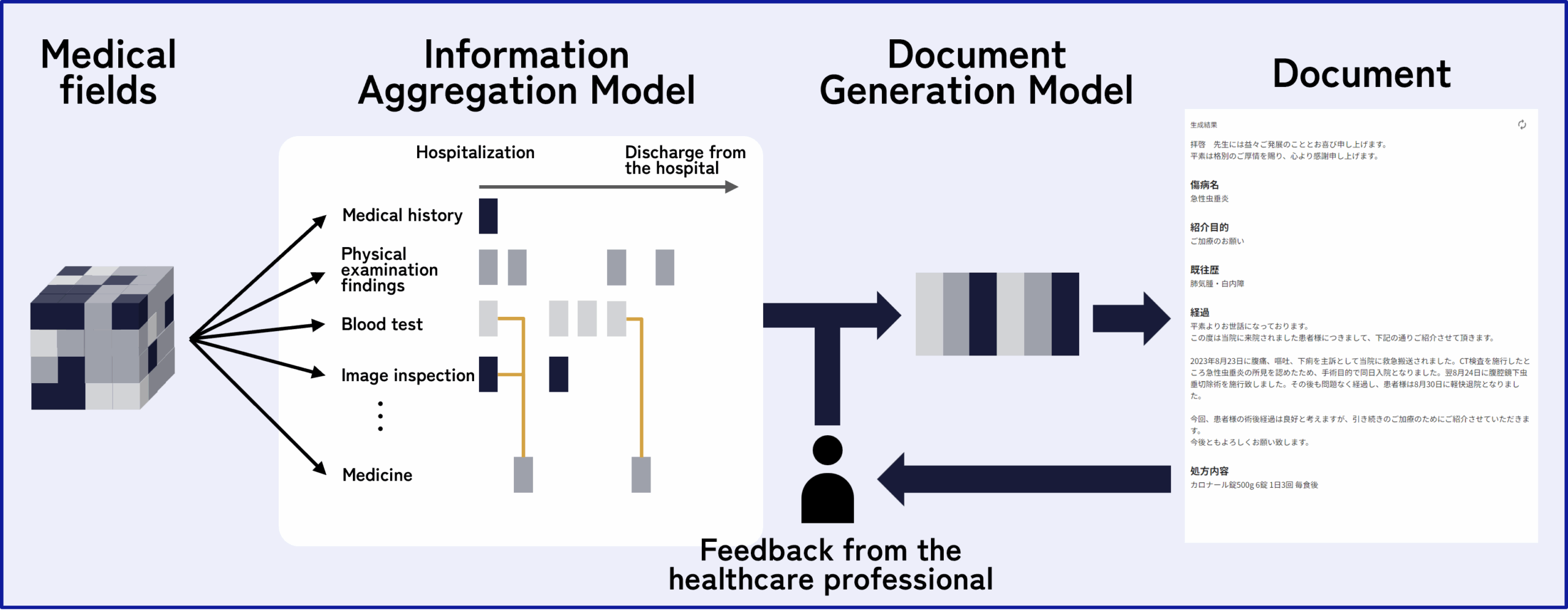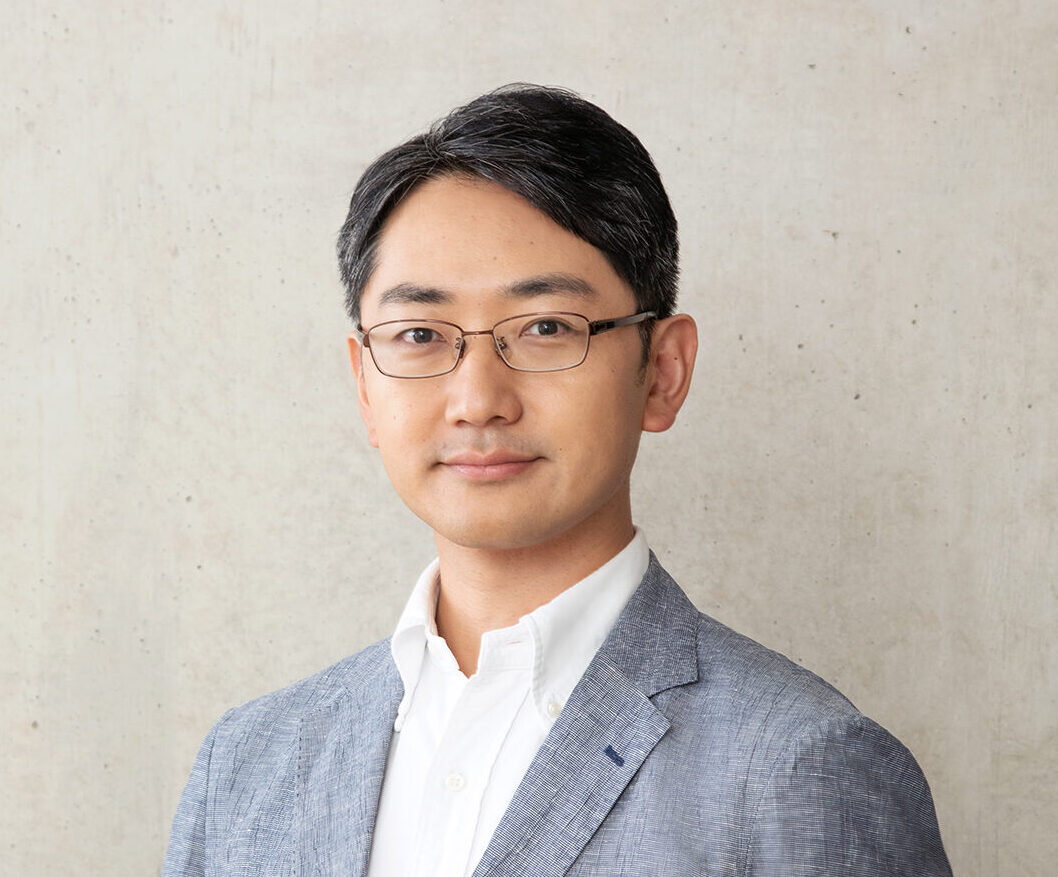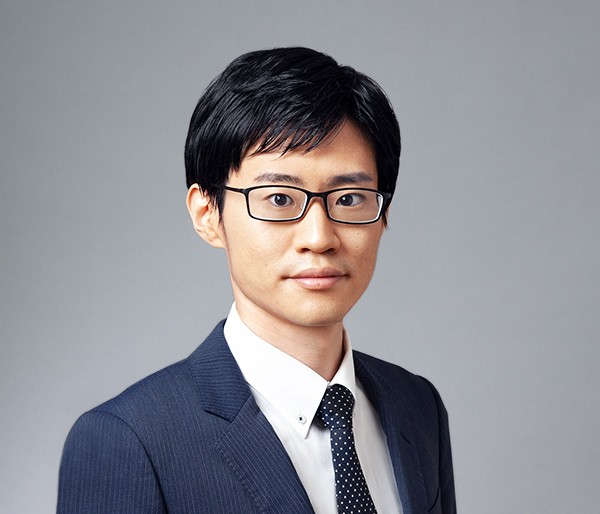
Optimized for Japanese clinical practice
Social implementation of a domestic medical-specific language AI model
Project Content
Social issues to be addressed
Even in recent years, there have been a number of preventable deaths in Japan's medical settings where patients' lives cannot be saved in time. While these situations are partly due to a shortage of medical staff, they can also be caused by excessive workloads on medical professionals. Furthermore, with the rapid increase in elderly patients in Japan, ensuring the sustainability of the entire medical care system, from the acute phase where lifesaving begins to the lifestyle phase where long-term treatment and rehabilitation are provided, has become an urgent issue. To make medical care sustainable, digital transformation (DX) using information technology is essential to redirect medical professional resources to solving essential issues. Utilizing information technology in hospital operations has the potential to contribute to realizing a world without preventable deaths.
Approach
This project aims to reduce the workload of medical professionals in emergency medical settings, which are the starting point for preventable deaths. The largest factor in overtime work for medical professionals is the creation of medical documents such as detailed symptom descriptions (*1), referral letters, and summaries. Therefore, we will develop a language AI model that collects and organizes information from medical settings and semi-automatically creates medical documents while acquiring knowledge through dialogue with doctors.

A unique feature of this project is the development of a model targeting elderly patients. Many elderly patients receiving emergency medical care suffer from multiple illnesses, making the creation of medical documentation for these patients complex and requiring a multifaceted perspective. We will develop a language AI model to create detailed symptom descriptions for emergency medical care for elderly patients, who can be difficult to create medical documentation for, and then aim to expand this model to other medical documentation and medical departments. Furthermore, for elderly patients, appropriate ongoing treatment, rehabilitation, and care after discharge is important for maintaining and improving their quality of life. Therefore, by digitizing transfer arrangements to rehabilitation hospitals and nursing facilities and the sharing of medical information from the hospital, we may be able to contribute to a seamless transition from the acute phase to the residential phase.
(*1) Detailed symptom statement: A document that explains why medical resources were required for a patient. It is prepared to show that medical resources were appropriately allocated and to serve as a basis for covering these costs within the scope of insured medical care. It must be prepared responsibly by the insured physician who bills for medical fees, and it places a burden on the physician's work.
What we will do in this project
- Development of a language AI model specialized for elderly medical care that seamlessly connects acute medical care to treatment, rehabilitation, and care during daily living.
- Introducing and improving the developed model in clinical practice
Project Representative

Graduate School of Informatics, Kyoto University
doctoral course
Naoki Okada (Naoki Okada)

Japan Research Institute, Ltd.
Center for Emergent Strategies
General Manager (New Business Development)/Executive Manager
Dai Saiki (Saiki Dai)
Learn moreProject Members
-

Professor at Kyoto University Hospital
Goshiro Yamamoto (Yamamoto Goshiro)
Learn more -

Japan Research Institute, Ltd.
Center for Emergent Strategies
ManagerMarie Tsujimoto (Marie Tsujimoto)
Learn more -

Japan Research Institute, Ltd.
Research and Consulting Division
ManagerKento Yamamoto (Taketo Yamamoto)
Learn more
By developing and implementing AI that semi-automatically creates medical documents,
We will create a medical environment where medical professionals can concentrate on providing medical care.